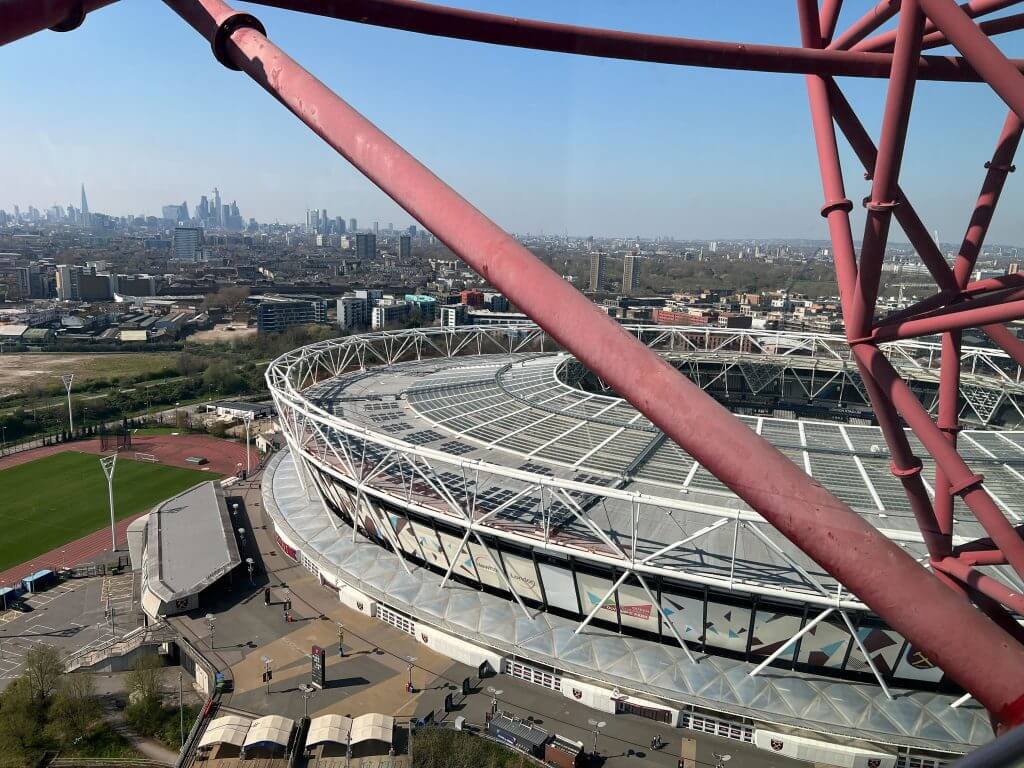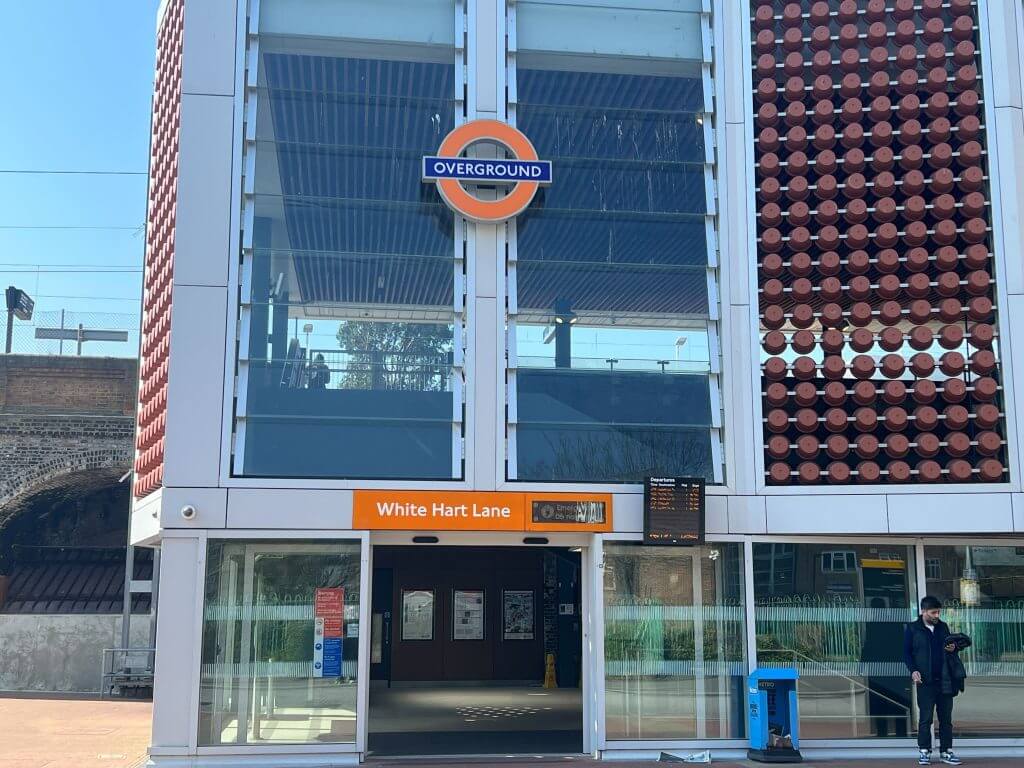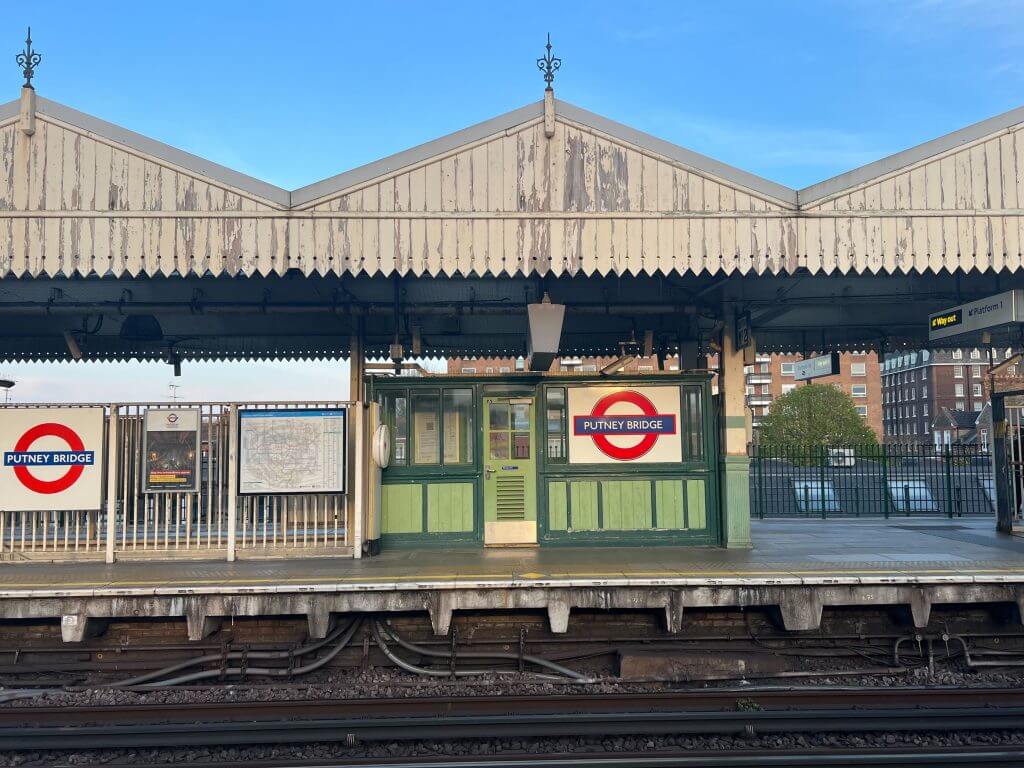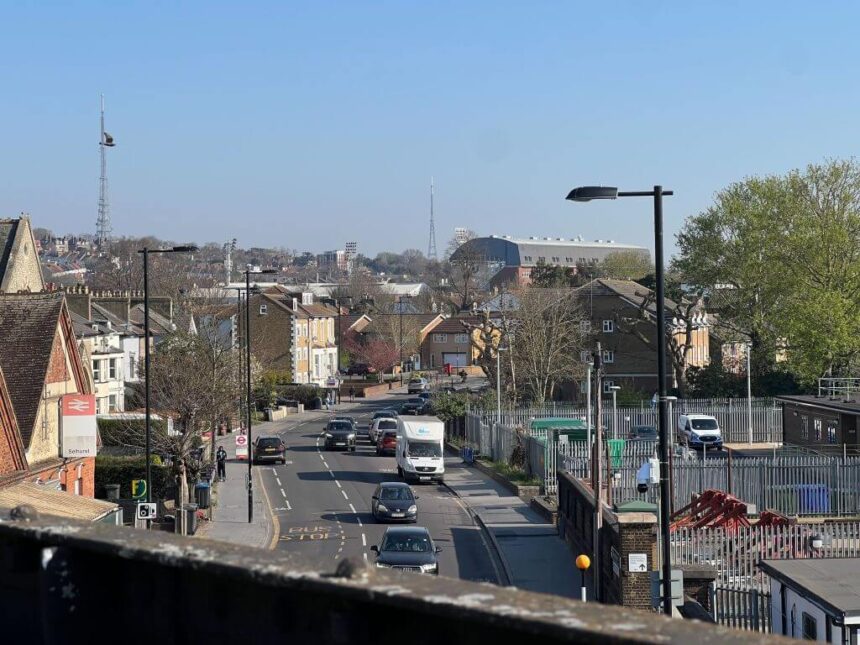How often do you think visiting fans travelling to watch a Crystal Palace game have got off the train at Crystal Palace station only to find Selhurst Park is a two-mile walk away?
What about those visiting Fulham and their west London rivals Chelsea? If they want to go to Chelsea, they have to travel to a tube station named Fulham Broadway, but if they want to go to Fulham, they have to travel to one called Putney Bridge.
Advertisement
Confusing, right? Especially when the capital hosts five matches in one weekend, as happened this weekend just gone.
To establish some clarity, and for a bit of fun, The Athletic sent me — a Northerner who has lived in London for almost three years but still gets lost — on a day-long, groundhopping adventure. The plan was to visit all seven Premier League stadiums in the capital. Across four of nine travel zones, I tapped in and out of train and tube stations approximately 27 times in 11 hours — all for just £12.80.
Here’s what I found.
Selhurst for Selhurst Park, home of Crystal Palace
My day began at the perpetually busy Clapham Junction. This is a station which has around 2,000 trains passing through its 17 platforms every single day. From there I got on a Southern Railway train to Selhurst to begin.
As the train pulled into Selhurst, the hooded roof of the Holmesdale Road stand at Selhurst Park popped into view. It’s always easier when the stadium finds you, but there’s also a helpful sign at the station: “Home of Crystal Palace Football Club, 100 years of Passion and Pride 1905-2005”. The year 1905 was when Palace turned professional. Palace as a club dates back to 1861.
Inevitably, Selhurst Park is not that close to Crystal Palace itself — an area of London named after a palace built for the Great Exhibition in the 1850s. Crystal Palace — the area, not the palace, since destroyed by fire — is about 1.8 miles from the football club.
The view of Selhurst Park from Selhurst station (Caoimhe O’Neill/The Athletic)
From Selhurst, a left turn as you exit the station takes you down Selhurst Road towards the 25,000-capacity stadium. The remnants of torn-off football stickers on every lamppost guide the way.
After passing a discarded two-seater leather couch on Dagmar Road, there is an electricity box painted in Palace’s colours. This notifies me I’m almost there. The Clifton Arms pub has its doors locked and its beer garden umbrellas down, which will never be the case on matchday.
Advertisement
The stadium itself has been Palace’s home since 1924, and there are still gates around the ground with gaps big enough to steal a look at the pitch, a rarity in the Premier League.
The back of the Main Stand is used as a cut-through by locals. Ted Hipworth is among those using it this morning on his way to the Sainsbury’s store which backs onto the stadium. The 78-year-old went to his first game here in the 1950s.
He says he’s happy with how the current team have established themselves in the Premier League, with a Wembley trip later this month for their FA Cup semi-final against Aston Villa. Due to the cost, Hipworth no longer attends as many matches as he used to.
“I am very pleased with how they are doing,” he says. “It is good for the community. I was born in Croydon and can’t understand people who support teams from somewhere else.”
Not that Selhurst Park is home to just one football team these days — after all, the ground is used as the backdrop for Ted Lasso’s AFC Richmond. Which, even more confusingly, is based in Richmond, around 12 miles across London.
Stratford for the London Stadium, home of West Ham United
When you arrive at Stratford station, the majority of signs point to Queen Elizabeth Olympic Park and Westfield Stratford City (a shopping centre). There is no real feeling of a football stadium being nearby. None of this was built for West Ham United — the millions of pounds pumped in to revamp the area was for London’s greatest show, the 2012 Olympic and Paralympic games.
West Ham have called this place home since 2016 when they waved goodbye to the Boleyn Ground. Here’s a bit of confusing trivia for you — West Ham’s old ground was technically in East Ham. It was named the Boleyn Castle, later the Boleyn Ground, because Anne Boleyn, the second wife of Henry VIII, either stayed or owned the house it was built next to, Green Street House.
Advertisement
The London Stadium does not quite have the same rustic or homely realness to it that the Boleyn Ground did, something West Ham fans have grappled with since leaving Upton Park. West Ham station is just over a mile away.
Stratford itself is a well-connected station. Central, Jubilee, DLR, Mildmay and Elizabeth lines all run through the station as well as national rail services. When you emerge from the station and walk in the direction of the London Stadium it is like exiting through a gift shop — but that gift shop has nothing to do with West Ham.

The view from the Orbit (Caoimhe O’Neill/The Athletic)
It is a catwalk of consumerism. Laser hair removal, book a holiday, hunt for a bargain at TK Maxx, drink some bubble tea. The football stadium feels somewhat out of place.
The walk is straightforward enough. It takes around 15 minutes and the Bow Back Rivers breaks up the convention centre feeling, as does the ArcelorMittal Orbit, which opened for the Olympics in 2012. It is home to a viewing deck and the Helix, the world’s tallest (76m) and longest (178m) tunnel slide. I climbed the 455-step spiral staircase and, after seeing the London Stadium from above, I took the slide back down — with the support of Rachel and James Gander and their two sons Will and Elliott, on a day trip from West Sussex on the south coast.
James was at the Olympic Park during the games and says it is all looking “a bit weathered” now. The best example of that is the green moss that has attached itself to the white steel cage crowning the stadium.
Another nearby station option is Pudding Mill Lane, which is a 10-minute walk to the ground but not one I would make alone on a non-matchday, given how derelict the route feels. Hackney Wick is another close option. The spray-painted walls make the journey a colourful one.
White Hart Lane for Tottenham Hotspur Stadium, home of Tottenham Hotspur
With its 62,850 capacity, Tottenham Hotspur Stadium is the largest club stadium in London. If you have a ticket to a Premier League or NFL game — Spurs host a minimum of two NFL games per season — then you will want to get off at White Hart Lane.
The small London Overground station has extra staircases that open up on matchday to contend with increased footfall and it is only about 500 steps from the stadium.
Advertisement
As soon as you step out onto Love Lane, the silver-clad spaceship-like vessel juts into view. The station shares a name with Spurs’ former home, which overlapped this site and was demolished as the modern structure, which opened in April 2019, was built.
Other nearby stations are Northumberland Park, Tottenham Hale and Seven Sisters but none are as close as White Hart Lane. Tottenham Hale, the one with the most similar name to the football club, is 1.3 miles away.
A fraying Spurs flag waves from the balcony of a flat on Moselle Place, where the street opens up to the stadium.

White Hart Lane station (Caoimhe O’Neill/The Athletic)
On the side of the West Stand, it says “established 1882”. But this building, which runs on renewable energy and features Europe’s longest bar, was very much not. The club store is where stadium tours begin, the whole place is bright and clean like the day it opened.
Along with housing F1 DRIVE, a go-karting experience, Spurs also have an art gallery on site. OOF Gallery is located in Warmington House, which was built in 1828. Spurs also saved the outside of the Tottenham & Edmonton Dispensary, which during the Victorian era gave out medicine to those in need. The building is now where names and numbers are printed onto the back of Spurs shirts.
Heading for the exit after a stadium tour is California native Tanner Dean with his dad Robert, brother Landon and brother-in-law Tyler. Dean says, when he moved to Kentucky, all of the friends he made played and watched soccer so he picked a team.
“I didn’t want to just pick anyone,” he says. “I watched all the teams and Peter Crouch was scoring headers left and right (for Spurs). He was the most fun to watch so it just naturally felt right to me.”
Worn out from the Helix, which felt like I dropped from the sky, I didn’t opt for The Dare Skywalk, which takes you on the roof of the stadium and around the famous Golden Cockerel.
Arsenal for Emirates Stadium, home of Arsenal
After schlepping my way across London, I finally find a station that bears the same name as its nearest team. There is something pure about getting off the tube at Arsenal to watch Arsenal. For anyone doing this for the first time, do be warned this station is extremely small with just six ticket barriers in total. It also has a pretty steep and cosy slope to climb up.
Advertisement
The station is home to the best Transport for London tiles for miles. The purple efforts are beautiful and rank high among the best tube station decor. Anne Hathaway, actor and Arsenal fan, would surely love them.
Of course, Arsenal tube being called Arsenal is not quite as simple as that. On this journey, apparently, it never is. Arsenal, then called Dial Square, were actually originally the works team of the Royal Arsenal in Woolwich, south east London.
You’ll find another station on the map called Woolwich Arsenal as part of the Docklands Light Railway. The team moved to north London, leasing the recreation fields in Highbury that would become their stadium, in 1913. The local Gillespie Road tube station was renamed in 1932 after the club, becoming the only tube station directly named after a football club.
When Arsenal are playing, the walk from the station to the Emirates Stadium over the Ken Friar Bridge takes about five minutes. The route, which passes an entrance to Gillespie Park behind the station, is usually lined with scarf sellers. The doors on some of the houses along Drayton Park are red for a reason.
After going from Spurs to Arsenal, I can’t help but compare the north London rivals. While Arsenal lead in the fashion and culture stakes, they now seem behind when it comes to facilities. Spurs’ six-year-old stadium just seems fancier and more fun on a non-matchday. They are targeting more than just football fans and are leading the way in that. No ground in or out of London can compete. In Highbury, the mood is different — it is quiet.
There are fans scattered about taking pictures around the ground or near to the cannons parked out in front of the stadium.
Signs for Archway, Angel, Highbury & Islington, as well as Finsbury Park, show the stadium is linked up.
Advertisement
“Getting to the stadium is very easy and accessible,” Ray, a dad of two who did not want his second name to be used, said. “There are multiple stations you can come from and they are all within walking distance of the stadium. You can drive in, the only problem is finding matchday parking which can be tough.”
Kew Bridge for the Gtech Community Stadium, home of Brentford
Now to that bus stop in Hounslow. Brentford’s rise to the Premier League has been one of the best stories in recent years — as has been their ability under Thomas Frank to stay there. Getting to their stadium is mostly straightforward with the Gtech Community Stadium, which has a capacity of under 18,000 and opened in 2020, sitting at the side of Kew Bridge.
From the national rail station to stadium, it is a two-minute walk and while Brentford have accessible entrances to the ground dotted on both sides of it, Kew Bridge is not accessible for wheelchair users due to the stairway exit and entrance to the two platforms. Another station you can use is Gunnersbury, which is an Overground and Underground terminal.
The Gunners, of course, is Arsenal’s nickname. Straightforward, eh?
The stadium blends in with the newly-built flats which enclose it. To get to the stadium’s club store, you have to walk towards the M4. When I got down there, the two members of staff looked pleased to see me. The footfall of tourists is not usually high when it is not gameday and the entrance is hidden from view.
Japanese video game company Sega neighbours the club. Another Brentford neighbour is the London Museum of Water & Steam. Brentford are nicknamed The Bees and have a bee on their shirt. In keeping with that, they have a microgarden at the back of the stadium which has pollinating plants.
Putney Bridge for Craven Cottage, home of Fulham
Another station which also frustratingly lacks accessibility is Putney Bridge. That is the closest tube station to Craven Cottage.
This is surely one of the most picturesque routes you can take from station to stadium in world football. After passing the River Cafe and Hurlingham Books, one of the oldest independent bookshops in the city, you will find The Eight Bells pub on Fulham High Street, an away fans-only establishment on game day.
Crossing over Putney Bridge Approach and going down into Bishops Park is the way to do it for Craven Cottage. Once you get into the park, busy with runners and dog walkers, you can take the Thames Path all the way along to Craven Cottage, Fulham’s home since 1896.

Fulham — near Putney Bridge, not Fulham Broadway (Caoimhe O’Neill/The Athletic)
The club have in recent seasons been finishing their new Riverside stand, which is now complete with its own sky-deck pool bar. Yet nothing will ever beat seeing the old cottage itself alongside the Grade II listed Johnny Haynes Stand with its original, poky turnstiles. It was designed by renowned stadium architect Archibald Leitch and brought to life in 1905.
And about 1.4 miles away from Craven Cottage, you will find Fulham Broadway tube station…
Fulham Broadway for Stamford Bridge, home of Chelsea
To get to Stamford Bridge, you are likely to pass through Fulham Broadway. But that does not seem to bug the Chelsea fans who are singing as they get off the District Line and make their way out of the matchday exits which open up only on gameday.
When turning left out of Wansdale Place, you join a pool of fans making their way along Fulham Road. Coming against the tide is a family of three from Indianapolis.
Advertisement
Katrina and Chris Keidel brought their 13-year-old son Arlo to London for spring break and were planning to watch the game until they were turned away at the turnstiles. The three tickets they bought for $1,000 proved to be fake.
“We are going to go to find a pub to watch the game and we will turn it in for fraud,” Katrina said. “We’re sad now but this is incredible just even being here in this atmosphere.”
“It is a little depressing,” Chris said. “We could feel the energy, we were excited going in and then we got turned away.”
(Top photos: Getty Images)










